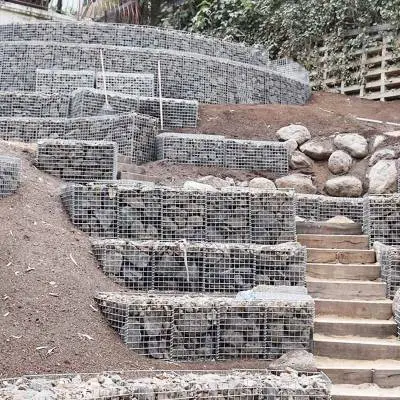Jul . 27, 2024 05:31 Back to list
China’s Architectural Woven Wire Mesh Solutions for Innovative Design and Sustainable Construction Applications
China Architectural Woven Wire Mesh A Modern Aesthetic for Architectural Design
In recent years, architectural design has seen a significant shift towards creating spaces that are not only functional but also visually appealing. One of the emerging trends within this realm is the incorporation of woven wire mesh, particularly from China, into various architectural elements. This innovative material offers both aesthetic versatility and functional benefits, making it a popular choice among architects and designers.
Woven wire mesh is a type of material created by interlacing wires, which can be made from various metals like stainless steel, aluminum, or bronze. The unique weaving patterns provide a range of visual effects and textures that can enhance the overall appeal of a structure. In China, manufacturers have honed their expertise in producing high-quality woven wire mesh, resulting in products that can be seamlessly integrated into a variety of architectural applications, from facades to partitions.
China Architectural Woven Wire Mesh A Modern Aesthetic for Architectural Design
Moreover, woven wire mesh is highly customizable. With a wide variety of weaving patterns, materials, and finishes available, architects can tailor the design according to specific aesthetic and functional requirements. This customization allows for the creation of unique visual statements that can complement or contrast with the surrounding environment. Designers can play with different densities and materials to achieve the desired balance between openness and enclosure, creating dynamic spaces that evolve with the movement of light throughout the day.
china architectural woven wire mesh

In addition to its aesthetic benefits, architectural woven wire mesh is incredibly durable and low-maintenance. Highly resistant to corrosion and various environmental factors, particularly when made from stainless steel, the mesh is suitable for both indoor and outdoor applications. This durability contributes to the longevity of architectural projects, ensuring that designs not only look good at the time of installation but also retain their visual appeal over the years.
The practicality of woven wire mesh extends beyond its durability. It can be used in a vast array of applications, including building facades, balcony railings, partitions, and even as decorative elements in landscaping. The material can serve functional purposes, such as providing shade, while simultaneously enhancing the visual intrigue of a building's exterior. This multiplicity of uses makes it a versatile option for modern architects looking to push the boundaries of design.
Furthermore, the use of woven wire mesh can also reflect a commitment to sustainability in architecture. By providing solutions that maximize natural light and airflow, architects can design structures that are not only visually striking but also environmentally conscious. Using locally sourced materials can also reduce a project’s carbon footprint, making woven wire mesh from China an excellent choice for architects committed to sustainable design practices.
In conclusion, China’s architectural woven wire mesh represents a fusion of tradition and innovation, offering a versatile solution for modern architectural challenges. Its ability to enhance the aesthetic quality of a building while serving functional needs makes it an attractive option for architects in today’s design landscape. As sustainability and aesthetics continue to take precedence in architectural design, woven wire mesh is set to play a pivotal role in shaping future urban environments.
share
-
CE Certified 250 Micron Stainless Steel Mesh for Precision Filtration
NewsAug.22,2025
-
CE Certified 250 Micron SS Mesh - Precision Filtration & Strength
NewsAug.21,2025
-
CE Certified Woven Wire Mesh Filters | Premium Filtration Solutions
NewsAug.19,2025
-
High-Performance Particle Filters: Optimal Mediums & Applications
NewsAug.18,2025
-
Competitive Screen Mesh Price | 1/4", 1/8", 1/2" Wire Mesh Screens
NewsAug.17,2025
-
CE Certified 250 Micron SS Mesh: Precision & Durability
NewsAug.15,2025

